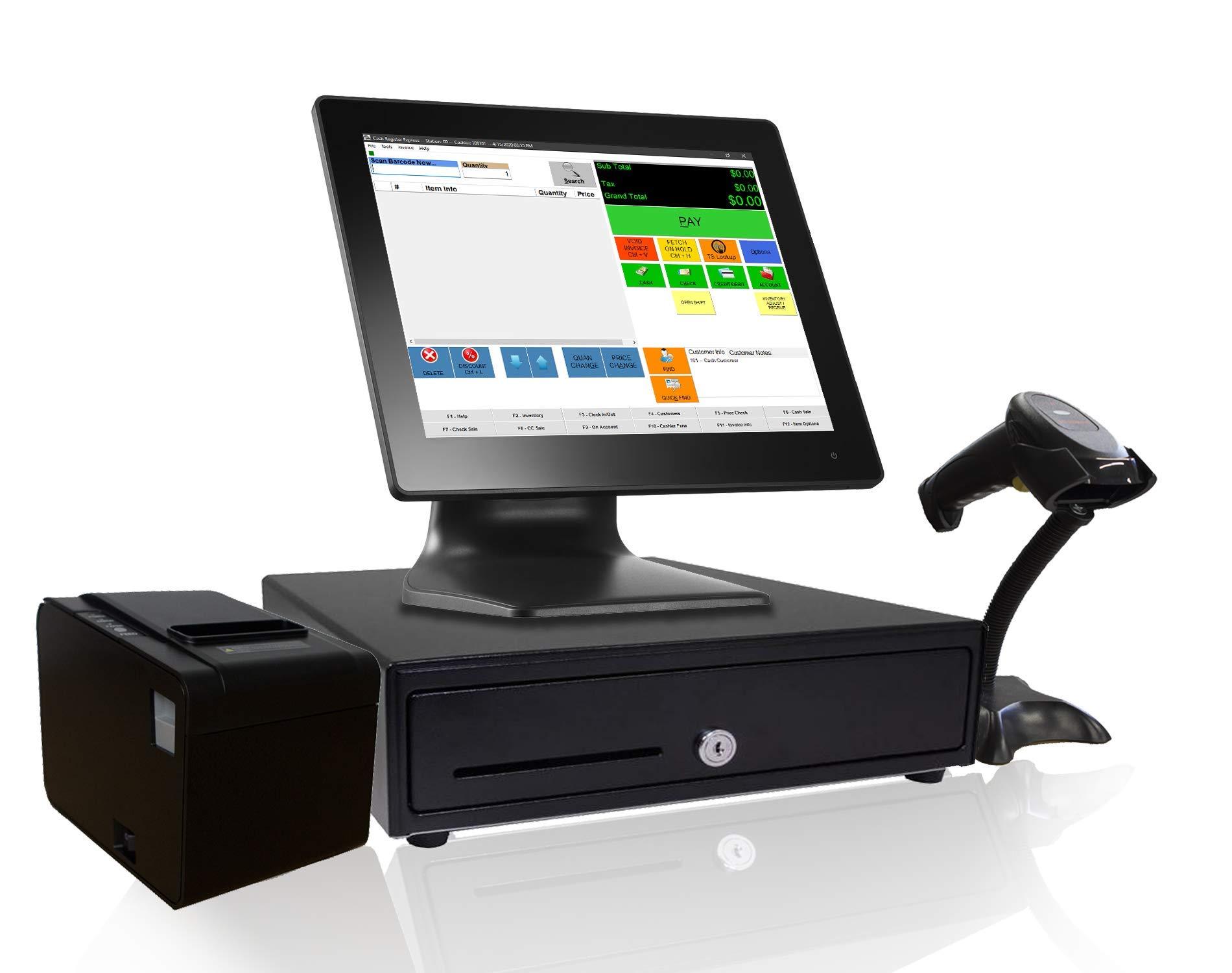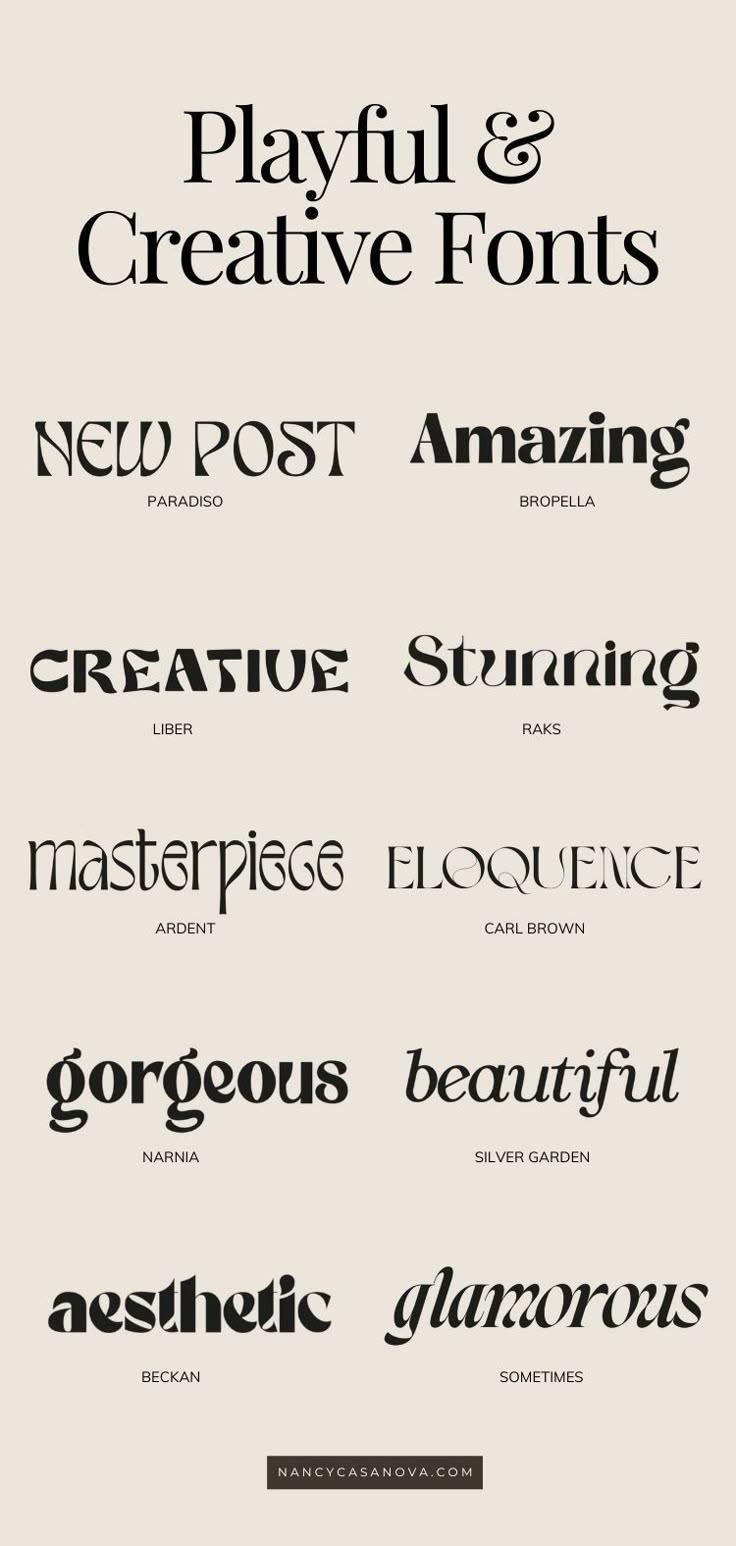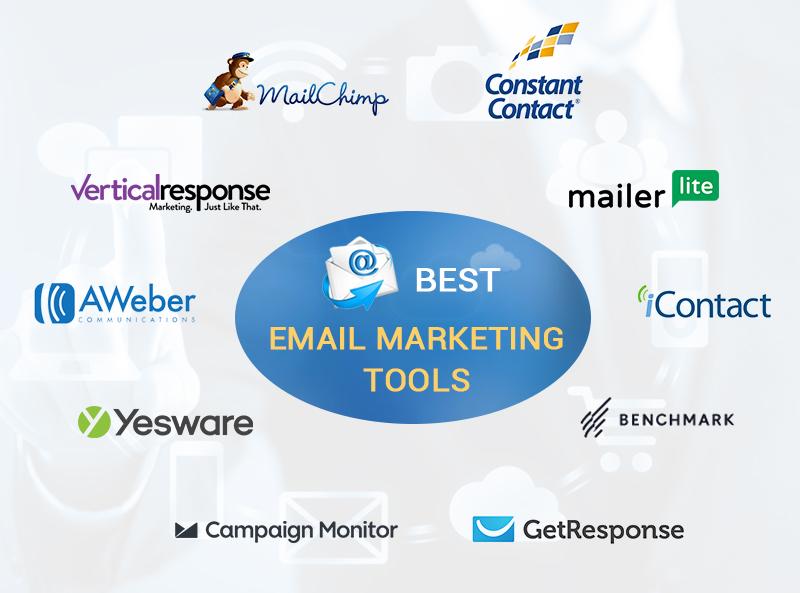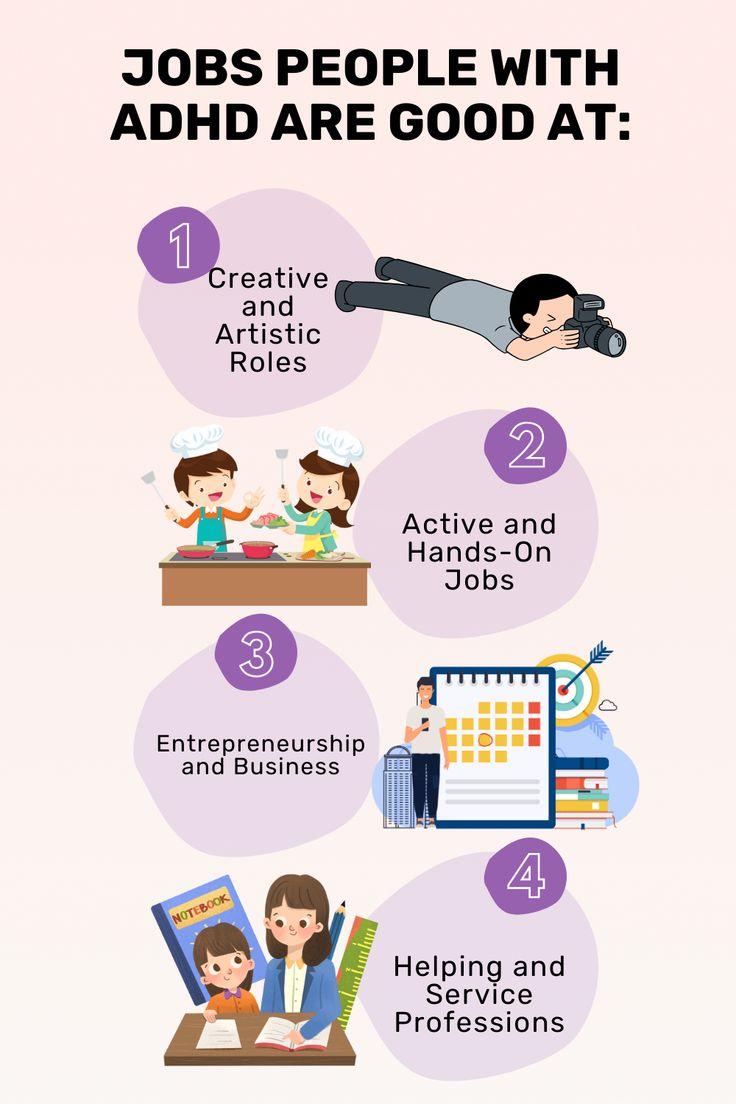
When it comes to creating a website, the “Contact Us” page is often an afterthought, overshadowed by the glamorous visuals and compelling content of other pages. But let’s face it—this page is your lifeline to potential customers, making it crucial in turning casual visitors into loyal clients. So, what exactly should you include to ensure that your “Contact Us” page doesn’t just exist, but actually works? In this article, we’ll explore the only elements you truly need to make your “Contact Us” page not just functional, but irresistible. Whether you’re a seasoned business owner or just starting out, stick around—your next big opportunity could be just a click away!
The Power of a Well-Designed Contact Us Page
A well-designed contact page serves as a vital bridge between your business and potential customers. It’s not merely a form with boxes to fill; it’s an opportunity to create a lasting first impression. When crafted thoughtfully, it can significantly enhance user experience and boost engagement.
First and foremost, clarity is key. Ensure your contact page is easy to find. Users should be able to locate it within seconds. A clear label in the main navigation, such as ”Contact Us” or “Get in Touch,” is essential. Once they reach this page, it should communicate trust and professionalism right away.
Next, consider the layout. A visually appealing design can make all the difference. Use whitespace effectively to avoid clutter, allowing visitors to focus on the essential elements. Incorporating high-quality images or icons can add a personal touch, making the page more inviting.
Another critical component is the contact form itself. Keep it simple yet comprehensive. Here are some fields you might include:
- Name: Allows for personal interaction.
- Email Address: Essential for follow-ups.
- Message: The user’s chance to express their thoughts.
- Phone Number: Optional, but can facilitate quick communication.
To enhance user experience further, consider adding live chat functionality. This real-time communication option can resolve queries immediately, reducing bounce rates and increasing customer satisfaction. In fact, 42% of consumers prefer live chat over other forms of communication!
Moreover, include your social media links. This not only provides additional contact methods but also encourages users to engage with your brand on multiple platforms. Each channel can serve as an alternative touchpoint, enhancing the overall customer experience.
Here’s a simple table to illustrate the benefits of a well-structured contact page:
| Element | Benefit |
|---|---|
| Clear Navigation | Enhances accessibility and user experience. |
| Simple Contact Form | Encourages more submissions with less friction. |
| Live Chat Option | Provides instant support, improving satisfaction. |
| Social Media Links | Builds community and offers alternative communication. |
Lastly, don’t forget to include a thank you message or confirmation once the form is submitted. This small touch reassures users that their message was received, and sets the stage for a positive interaction moving forward. It’s these little details that can turn a simple contact page into a powerful tool for connection.
Essential Elements to Include For Maximum Engagement
Creating a compelling “Contact Us” page is crucial for fostering engagement and building trust with your audience. To make the most of this important section of your website, consider including these essential elements:
- Clear Contact Information: Make sure your phone number, email address, and physical address are easy to find. Using icons can enhance visibility and guide visitors to the right channels.
- Contact Form: A simple and user-friendly contact form encourages visitors to reach out without the hassle of composing an email. Keep fields to a minimum to avoid overwhelming them.
- Social Media Links: Direct visitors to your social media profiles by adding recognizable icons. This not only offers additional contact methods but also invites them to engage with your brand on multiple platforms.
- Response Time Expectations: Set clear expectations about how quickly users can expect a response. A simple note like “We typically respond within 24 hours” builds trust and encourages inquiries.
Moreover, consider incorporating some interactive elements to enhance user experience:
- Live Chat Feature: Implementing a live chat option provides instant communication, making it easier for users to get immediate assistance. This can drastically increase engagement rates.
- FAQ Section: Including a few frequently asked questions with answers can preemptively address common concerns. This not only saves time but also enhances the user experience.
To further optimize your “Contact Us” page, use a clean, responsive design. A cluttered page can deter visitors. Ensure that everything is spaced well and that all elements are mobile-friendly. This is especially important as more users browse on their smartphones.
Lastly, think about the tone of your communication:
| Friendly Tone | Professional Tone |
|---|---|
| “We can’t wait to hear from you!” | “We look forward to your inquiry.” |
| “Drop us a line anytime!” | “Please feel free to contact us at your convenience.” |
Incorporating these elements not only enhances user experience but also significantly increases the likelihood of engagement. A well-structured ”Contact Us” page can act as a bridge between you and your audience, making communication seamless and effective.
Crafting the Perfect Contact Form for User Convenience
Creating a contact form that resonates with users and encourages them to reach out is essential for any website. A well-crafted contact form not only simplifies communication but also enhances user experience. Here are some key elements to consider when designing your form:
- Clear Labels: Ensure that each input field has a clear and concise label. This helps users understand what information is required without confusion.
- Minimal Fields: Keep the number of fields to a minimum. Asking for only essential information reduces friction and increases the likelihood of users completing the form. Aim for the following fields:
- Name
- Message
- Responsive Design: Your contact form should be mobile-friendly. A responsive design ensures that users on any device can easily fill out the form.
- Error Handling: Provide real-time validation feedback. If users make a mistake, let them know immediately and guide them on how to correct it.
Additionally, consider adding some interactive elements to make the form more engaging:
- Drop-down Menus: Use drop-down menus for specific inquiries. This can help streamline responses and categorize messages efficiently.
- Check Boxes: Allow users to select topics of interest or preferred contact methods. This personalization can lead to better engagement.
| Field Type | Purpose | Best Practices |
|---|---|---|
| Name | User identification | Keep it required |
| Contact method | Validate format | |
| Message | User feedback | Encourage detail |
Lastly, never underestimate the power of a friendly closing message. A simple line such as “We appreciate your feedback and will get back to you shortly!” can leave a positive impression and reassure users that their message is valued. Implementing these elements will not only improve user satisfaction but also foster trust and encourage ongoing communication.
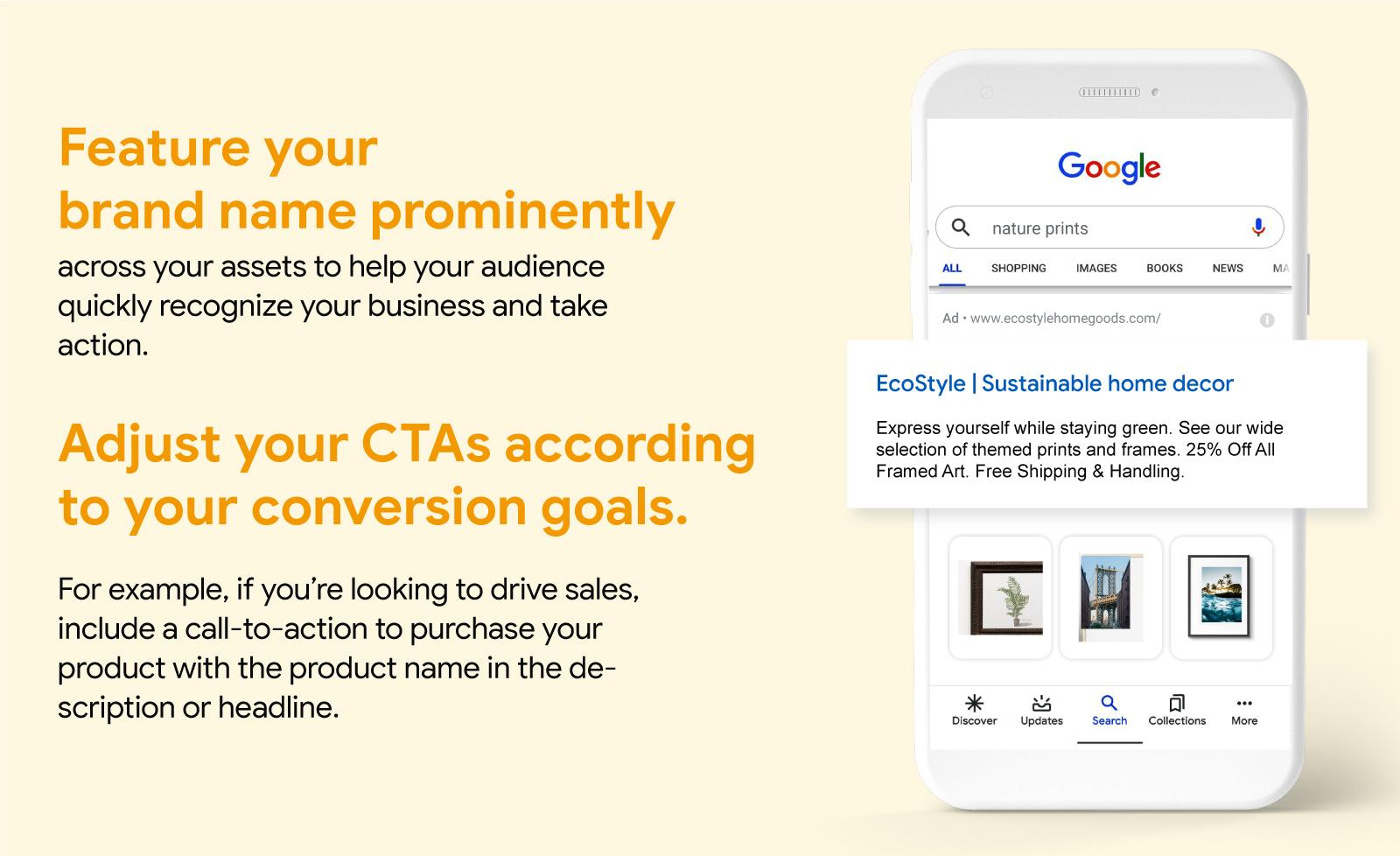
Why a Clear Call to Action is Critical for Your Page
When visitors land on your Contact Us page, their next steps should feel obvious and effortless. A clear call to action (CTA) serves as the guiding light, directing users on what to do next. Whether it’s filling out a form, sending an email, or calling a number, clarity in your CTA eliminates confusion and enhances user experience.
Consider the following reasons why having a clear CTA is non-negotiable:
- Increases Conversion Rates: A well-defined CTA can significantly boost your chances of conversion. When users understand what action to take next, they’re more likely to follow through.
- Builds Trust: Clear instructions demonstrate transparency. When users know exactly what to expect, it reduces anxiety and builds trust in your brand.
- Enhances User Experience: A seamless experience is vital. Simplified steps with a clear CTA provide users with confidence in navigating your site.
- Guides Your Audience: Not every visitor will know what they want right away. A prompt helps guide them down the path you want them to take, effectively leading them toward a desired action.
To ensure your CTA is effective, consider these best practices:
| Best Practice | Description |
|---|---|
| Use Action-Oriented Language | Words like “Get Started,” “Contact Us,” or “Request a Quote” encourage immediate action. |
| Make It Visually Distinct | Your CTA button should stand out. Use contrasting colors and larger fonts to catch the eye. |
| Position Strategically | Place your CTA where users expect it. Common spots include the top of the page, at the bottom, or after engaging content. |
| Keep It Simple | Avoid clutter; a single, focused CTA is more effective than multiple competing actions. |
Don’t underestimate the power of a clear CTA. It transforms your Contact Us page from a mere informational space into an active engagement platform. With the right prompts, you can turn casual visitors into loyal customers. Always remember: clarity leads to action, and action leads to results!

The Importance of Location Information for Trustworthiness
When potential customers land on your Contact Us page, the first thing they seek is reassurance. One of the most effective ways to foster trust is through clear location information. Providing your business’s physical address is not just a formality; it’s a critical element that can significantly impact a visitor’s perception of your brand.
Here are a few reasons why location details matter:
- Establishes Credibility: A visible address adds a layer of authenticity to your business. Customers are more likely to engage with a company that appears grounded in a real-world location.
- Enhances Search Visibility: Including location information can boost your local SEO efforts. When people search for services near them, your clear address helps your business appear in local search results.
- Builds Connection: By sharing your location, you invite customers into your community. This connection can foster loyalty and encourage people to choose your business over competitors.
- Facilitates Communication: Providing a location can also help customers know the best way to reach you, whether by phone, email, or in person. This transparency can lead to better customer relationships.
Moreover, showcasing location information can be particularly effective when presented in a visually appealing format. Consider adding a map to your Contact Us page. This not only gives visitors a clear idea of where you are based but also demonstrates that you’re open for business and ready to serve them.
| Advantages of Providing Location | Impact on Customers |
|---|---|
| Increased Trust | More likely to engage with your brand |
| Local SEO Boost | Higher chances of being found in local searches |
| Community Engagement | Strengthens customer loyalty |
| Clear Communication | Reduces customer confusion |
Incorporating location information effectively means more than just dropping an address on the page. Think about including details like nearby landmarks or directions for ease of access. You can also highlight the area you serve if your business has a broader reach. This strategic addition can ensure that customers feel more confident about reaching out.
Ultimately, the presence of location information on your Contact Us page is not simply about where you are but about the relationship you’re building with your audience. By being transparent and accessible, you create a foundation of trust that can lead to lasting customer loyalty.
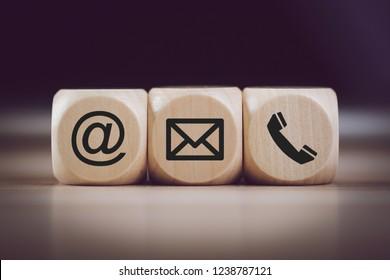
How to Choose the Right Contact Methods for Your Audience
Choosing the right contact methods for your audience is crucial for fostering effective communication. It’s not just about providing options; it’s about tailoring those options to fit the preferences and habits of your target demographic. Start by considering the preferred communication styles of your audience. Are they more inclined to reach out via traditional methods like email or phone calls, or do they prefer modern solutions like chat or social media?
One of the first steps is to analyze your audience’s demographics. This includes age, location, and tech-savviness. For instance, younger audiences might favor instant messaging or social media platforms, while older generations might appreciate a more traditional approach. Implementing a mix of communication methods can help you cater to varying preferences.
Next, consider the nature of your business and the types of inquiries you typically receive. If you provide technical support, a dedicated live chat option can offer immediate assistance, making it easier for customers to resolve issues quickly. On the other hand, if you’re running an e-commerce site, ensuring that your email response times are swift can significantly enhance customer satisfaction.
Another important factor is to ensure that your contact methods are easily accessible. Use clear, straightforward labeling on your contact page, so visitors can quickly understand how to reach out. This includes using bold text or contrasting colors to make these options stand out. For example:
| Contact Method | Ideal For | Response Time |
|---|---|---|
| Non-urgent inquiries | 24 hours | |
| Phone | Immediate assistance | Instant |
| Live Chat | Technical support | Instant |
| Social Media | Engagement and feedback | Varies |
Keep in mind that the user experience (UX) on your contact page will heavily influence the methods you choose. A cluttered page can overwhelm visitors, causing them to abandon their inquiries. Ensure each method is presented clearly and concisely. You might want to include a short description of what type of questions or issues should be directed to each contact method to streamline the process.
Lastly, remember that you can’t just set up these contact methods and forget about them. Monitor and analyze feedback to understand which methods are most effective. Are customers preferring live chat over email? Are they leaving messages on social media with questions? Using analytics can help you continually refine your approach to meet your audience’s evolving needs.
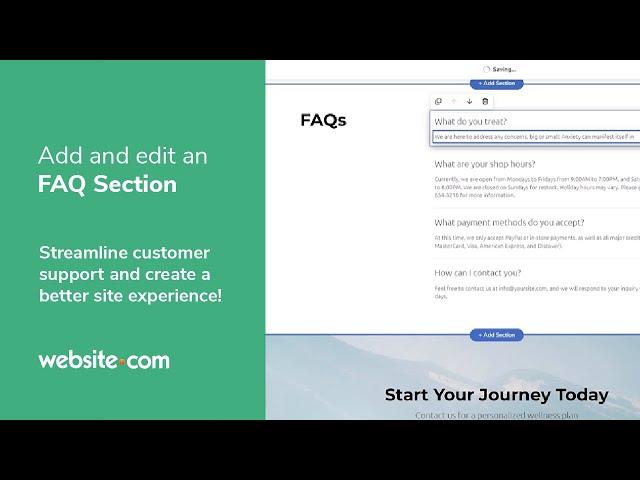
Creating an FAQ Section to Address Common Queries
When designing a Contact Us page, incorporating an FAQ section can significantly enhance user experience. This area serves as a quick reference for visitors, allowing them to find answers to common questions without needing to wait for a response. Here are a few key points to consider when crafting your FAQ section:
- Identify Common Questions: Start by gathering the most frequently asked questions from your customers. This could include topics such as shipping policies, payment options, or return procedures.
- Keep it Simple: Each answer should be concise and straightforward. Aim to use clear language that everyone can understand, avoiding jargon or overly technical terms.
- Organize by Categories: If your business has multiple areas of concern, consider categorizing the questions. This helps visitors navigate easily and find the information they need without frustration.
- Update Regularly: As your business grows and evolves, so will your customer inquiries. Make it a practice to review and update your FAQ section periodically to reflect new information or changing policies.
Here’s a simple table to illustrate how to present your FAQs effectively:
| Question | Answer |
|---|---|
| What is your return policy? | Items can be returned within 30 days for a full refund. |
| Do you ship internationally? | Yes, we offer shipping to select countries. |
| How can I track my order? | You will receive a tracking number via email once your order ships. |
Furthermore, consider using a collapsible format for your FAQ section. This allows users to click on questions to reveal answers, keeping the interface clean and uncluttered. It also encourages users to engage more with the content, as they can easily expand what interests them most.
- Incorporate Search Functionality: If your FAQ section becomes extensive, adding a search bar can help users quickly find answers.
- Link to Relevant Pages: Where applicable, link to detailed pages on your site for users who need further information. For instance, if a question pertains to your privacy policy, direct them to that specific document.
- Encourage User Feedback: Allow customers to submit their questions or suggest new ones. This can help you continuously improve the FAQ section and make it more relevant to your audience.

Building a Sense of Urgency with Response Time Promises
When potential customers visit your ”Contact Us” page, they are often looking for immediate assistance or answers to their queries. One way to stand out and enhance your customer experience is by incorporating a response time promise. This simple yet effective strategy can instill a sense of urgency and reliability in your visitors.
Setting clear expectations regarding response times can significantly impact how customers perceive your brand. Here’s why it’s essential:
- Builds Trust: By openly communicating your response times, you foster transparency. Customers feel more at ease knowing when they can expect to hear back from you.
- Encourages Engagement: When people know their queries will be addressed quickly, they are more likely to reach out and engage with your business.
- Minimizes Anxiety: Uncertainty can lead to frustration. Clearly stating your response time can help mitigate this and provide reassurance.
Consider implementing a clear response time promise, such as:
| Response Time | Commitment |
|---|---|
| Within 1 hour | For urgent inquiries |
| Within 4 hours | For general questions |
| Within 24 hours | For non-urgent matters |
These promises should be prominently displayed on your contact page, making it easy for visitors to find them. Additionally, consider using engaging language to frame your commitment. For example, you might say, “We’re here for you and promise to respond within one hour for urgent matters! Your questions are important to us!”
Remember, however, that a promise is only as good as your ability to deliver on it. It’s crucial to monitor your response times and ensure that your team can meet the commitments you’ve made. Consistently fulfilling your response time promise not only strengthens your brand reputation but also enhances customer loyalty.
Incorporating a response time promise into your “Contact Us” page is more than just a strategy; it’s a commitment to excellent customer service. By showing your visitors that you value their time and inquiries, you create a welcoming environment that encourages them to reach out, thus fostering communication and building lasting relationships.
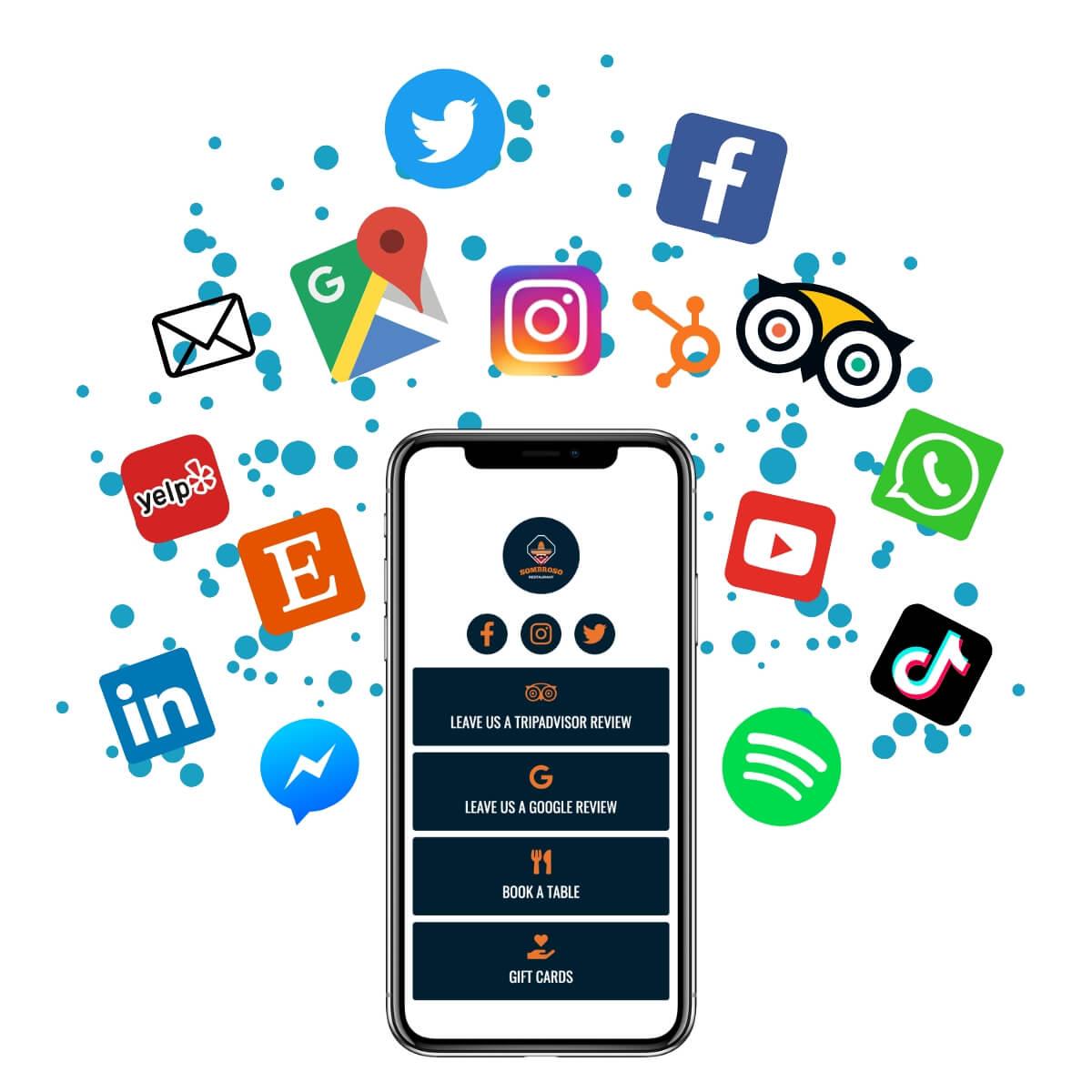
Leveraging Social Media Links for Broader Connections
In today’s interconnected world, social media is more than just a platform for sharing personal updates; it’s a powerful tool for expanding your brand’s reach and enhancing customer engagement. By strategically placing social media links on your Contact Us page, you enable visitors to connect with you across various platforms, fostering a sense of community and trust.
When visitors arrive at your Contact Us page, they are often looking for a way to engage directly with your brand. Including social media links gives them options beyond just email or phone contact. Here’s why this approach is not only beneficial but essential:
- Increased Engagement: Social media allows for real-time interaction. By encouraging users to follow your accounts, you can keep them updated on your latest news, product launches, and promotions.
- Broadened Audience Reach: Each social media platform has its unique audience. By linking to your profiles, you can tap into these diverse groups and expand your reach organically.
- Enhanced Credibility: A robust social media presence can enhance your brand’s credibility. When customers see active engagement on your profiles, they are more likely to trust your brand.
To make the most of your social media links, consider the following tips:
- Choose Relevant Platforms: Focus on the social media channels where your target audience spends their time. Whether it’s Instagram for a visually-driven audience or LinkedIn for professionals, tailor your links accordingly.
- Highlight Engagement Opportunities: Use your social media to showcase user-generated content, testimonials, or live events. This demonstrates interaction and encourages visitors to join the conversation.
- Clear Call-to-Action: Don’t just list your social links—invite visitors to follow, like, or share. Phrasing like “Join our community!” or “Let’s connect!” can motivate users to take that step.
Additionally, consider incorporating a table to visually represent your social media presence:
| Platform | Username/Handle | Engagement Type |
|---|---|---|
| @YourBrand | Community Updates | |
| @YourBrand | Visual Content | |
| @YourBrand | Real-Time Interaction | |
| @YourBrand | Professional Networking |
By leveraging these social media links effectively, you create multiple pathways for potential customers to engage with your brand. More connections can lead to more conversations, ultimately enhancing customer loyalty and driving growth. Remember, your Contact Us page isn’t just a destination; it’s a gateway to broader connections.

Design Tips for an Inviting and User-Friendly Interface
Creating a contact page that is both inviting and user-friendly is essential for encouraging visitors to reach out. Here are some key design tips to consider:
- Clear and Concise Layout: Use a straightforward layout that guides users naturally through the page. Avoid clutter and ensure that each element serves a purpose.
- Strategic Use of Colors: Choose color schemes that reflect your brand while ensuring readability. Soft, inviting colors can create a welcoming atmosphere.
- Readable Fonts: Select font styles and sizes that are easy to read. Stick to one or two complementary fonts to maintain consistency throughout the page.
Moreover, incorporating visual elements can significantly enhance user experience:
- Engaging Images: Include relevant images or icons that resonate with your brand, making the page feel more personable and approachable.
- Whitespace: Don’t underestimate the power of whitespace. It helps to reduce overwhelm and allows users to focus on the essential elements.
When it comes to functionality, prioritize user-friendly features:
- Responsive Design: Ensure your contact page is mobile-friendly. More users are accessing websites via their phones, so adaptability is crucial.
- Easy Navigation: Provide quick links to other important sections, like FAQs or support pages, to help users find additional information effortlessly.
consider adding interactive elements that encourage communication:
| Interactive Elements | Benefits |
|---|---|
| Contact Form | Allows users to send messages directly without opening their email. |
| Live Chat Support | Offers instant assistance, improving user satisfaction. |
| Social Media Links | Provides alternative contact methods and builds community. |
By carefully considering these design aspects, you can create a contact page that not only looks great but also functions effectively to foster communication and connection with your audience.

Optimizing for Mobile Users: A Must-Have Strategy
In today’s fast-paced digital landscape, ensuring a seamless experience for mobile users is no longer optional; it’s essential. With more than half of web traffic coming from mobile devices, it’s crucial to tailor your Contact Us page for this audience. A mobile-optimized design not only improves usability but also boosts your brand’s credibility and fosters customer trust.
When designing your mobile contact page, consider implementing the following key elements:
- Simple & Intuitive Layout: Keep the design clean and straightforward. Avoid clutter by using ample white space to highlight essential contact details.
- Click-to-Call Features: Integrate phone numbers as clickable links. This allows users to dial directly from their mobile devices without the hassle of copying and pasting.
- Easy Navigation: Ensure that your contact form is easily accessible. Use a prominent button that stands out, guiding users to the form effortlessly.
- Responsive Design: Make sure your page adapts to different screen sizes. A responsive design enhances the user experience, making it easy to read and interact with your content.
Furthermore, consider the importance of loading speed. Mobile users tend to expect fast access to information. A delay can lead to frustration and potential loss of prospective customers. Use tools like Google’s PageSpeed Insights to analyze and optimize your load times.
Incorporating a concise FAQ section can also be beneficial. This can preemptively address common inquiries, reducing the need for users to reach out directly. Here’s a simple table for quick reference:
| Question | Answer |
|---|---|
| What are your hours of operation? | Mon-Fri: 9 AM – 5 PM |
| Where are you located? | 123 Business Rd, City, State |
| How do I get in touch? | Fill out the form or call us! |
Moreover, encourage feedback by providing a *brief survey link* or *ratings option* on your contact page. This not only increases user engagement but also provides valuable insights into customer satisfaction and expectations.
don’t forget to include links to your social media profiles. Mobile users often prefer reaching out through platforms they are familiar with. By providing these options, you cater to their preferences and make it easier for them to connect with you.
Adding Personal Touches to Enhance Customer Relations
Creating a memorable Contact Us page is all about making your customers feel valued and understood. By adding personal touches, you can transform a standard contact form into an engaging experience that reflects your brand’s personality. Here are some effective strategies to consider:
- Personalized Greetings: Start with a warm, friendly greeting that sets the tone for your interaction. Instead of a generic “Hello,” try something like “Hey there, we’re excited to hear from you!”
- Use Names: If possible, address visitors by name. If they’ve logged in or registered, incorporate their name into the contact form. A simple “Hi, [Name]!” can make a world of difference.
- Show Your Team: Include photos and short bios of your customer service representatives. This humanizes your brand and gives customers a face to connect with, making the experience feel more personal.
- Response Time Assurance: Let customers know when they can expect to hear back. Be transparent about your response times, and consider using a friendly tone: “We’ll get back to you within 24 hours – we promise!”
Incorporating user-generated content can also strengthen the bond between your brand and the customer:
- Testimonials: Highlight positive feedback from previous customers. A quote from a satisfied client can instill confidence in new visitors.
- Engagement Options: Offer different ways to reach out, such as social media links or live chat options. This not only provides alternatives but also shows that you’re approachable.
Consider incorporating a small feedback section where customers can share their experiences:
| Feedback Area | Purpose |
|---|---|
| Suggestions | Encourage ideas to improve your service. |
| Complaints | Provide a space for customers to express dissatisfaction. |
| General Comments | Open the floor for any feedback. |
don’t forget to thank your customers for reaching out. A simple “Thank you for contacting us, we value your input!” can go a long way in showing appreciation and solidifying a positive relationship. Remember, every interaction is an opportunity to strengthen your customer relations and build loyalty.

Best Practices for Data Privacy and User Security
When it comes to crafting an effective “Contact Us” page, prioritizing data privacy and user security is essential. As your visitors reach out for support or inquiries, ensuring their information is protected can build trust and foster a positive relationship between you and your audience.
Here are some best practices to ensure data privacy and user security:
- SSL Encryption: Always use Secure Sockets Layer (SSL) encryption. This ensures that any data submitted through your contact form is securely transmitted over the web.
- Minimal Data Collection: Only ask for essential information. Requesting too much data can deter users. Stick to the basics like name, email, and message.
- Clear Privacy Policy: Link to your privacy policy directly on the contact page. This transparency reassures users that their data will be handled responsibly.
- CAPTCHA Verification: Implement CAPTCHA to prevent spam submissions. This adds an extra layer of security without compromising user experience.
It’s also crucial to communicate with users about how their data will be used. Consider including a brief statement regarding the purpose of data collection. For example:
“We value your privacy. Your information will only be used to respond to your inquiries and will never be shared with third parties.”
Another vital aspect is to provide users with an easy way to opt-out of communications. Allowing users to control their data preferences not only complies with regulations but also enhances their sense of security.
| Data Protection Measures | Benefits |
|---|---|
| SSL Encryption | Protects user data during transmission |
| Minimal Data Collection | Reduces user anxiety and increases form submissions |
| Clear Privacy Policy | Builds trust and ensures compliance |
| CAPTCHA Verification | Prevents spam and malicious activities |
ensure that your contact page is easily accessible. A well-placed link in the header or footer of your website can significantly increase user engagement. Remember, a contact page isn’t just a form; it’s a gateway to interaction and relationship-building.

Testing and Updating Your Contact Page Regularly for Success
Keeping your contact page up-to-date is essential for maintaining a strong connection with your audience. Over time, your business may undergo changes—new staff, updated phone numbers, or even a shift in service offerings. Regularly testing and updating your contact details ensures that visitors can reach you without frustration.
Here are a few key elements to focus on:
- Form Submission: Test your contact forms regularly to ensure they function properly. Check for any broken links or errors that might prevent users from reaching you.
- Response Time: Consider setting a standard for how quickly you respond to inquiries. If you notice delays, it might be time to review your customer service processes.
- Information Accuracy: Verify that all phone numbers, email addresses, and physical locations are still current and correct. A simple typo can lead to lost opportunities.
Additionally, consider gathering feedback from users on their experience with your contact page. This can provide invaluable insights into what works and what doesn’t. You might create a simple survey and include it on your thank-you page after form submission. Ask questions like:
| Question | Purpose |
|---|---|
| Was it easy to find our contact page? | To assess visibility and user navigation. |
| Did you receive a timely response? | To evaluate response efficiency. |
| Would you recommend our contact methods to others? | To gauge user satisfaction and loyalty. |
Analyzing the feedback can lead to actionable changes that enhance user experience. If users frequently mention challenges with the contact form, it may indicate a need for redesign or simplification.
don’t forget to keep an eye on analytics related to your contact page. Tools like Google Analytics can provide insights into how many users visit this page, how they arrived there, and what actions they take. This data can help you identify trends and make informed decisions about necessary adjustments.
By prioritizing regular tests and updates, you’re not just enhancing your contact page; you’re also reinforcing your brand’s commitment to excellent customer service. A well-maintained contact page can lead to increased engagement and ultimately, a stronger relationship with your audience.
Frequently Asked Questions (FAQ)
Q&A: The Only Elements You Need on a Contact Us Page
Q: Why is a Contact Us page so important for my website?
A: Think of your Contact Us page as the bridge between you and your audience. It’s where potential customers connect with you. A well-structured Contact Us page builds trust and invites engagement, making it easier for visitors to reach out with questions or feedback.
Q: What are the must-have elements for a Contact Us page?
A: Great question! At the very least, your Contact Us page should include:
- Clear Headline: A straightforward title like “Get in Touch” lets visitors know they’re in the right place.
- Contact Form: This is a vital element. Make it easy for users to drop you a message without having to open their email client. Keep the form simple — just ask for the essentials like name, email, and message.
- Email Address: Some people prefer sending emails directly. Including your email ensures they have that option.
- Phone Number: For those who like to talk it out, having a phone number readily available can enhance trust and accessibility.
- Physical Address: If you have a location, share it! This can give an extra layer of credibility and may even encourage local customers to reach out.
- Social Media Links: Not everyone prefers traditional contact methods. Including links to your social media can help you engage with your audience where they’re most comfortable.
- FAQ Section: Consider adding a mini FAQ right on the Contact page. This can address common queries, freeing up your time and guiding users quickly.
Q: How do I make my Contact Us page more engaging?
A: Personalize it! Add a friendly message that welcomes visitors and encourages them to reach out. You can even include a photo of your team or office to humanize your brand. The goal is to make them feel like they’re communicating with real people, not just a faceless entity.
Q: Are there any design tips to keep in mind?
A: Absolutely! Keep it clean and uncluttered. Use whitespace effectively to draw attention to the contact form. Ensure your page is mobile-friendly, as many users will be reaching out from their phones. And, don’t forget to use contrasting colors so that your contact elements stand out!
Q: What if I’m worried about receiving too many inquiries?
A: It’s natural to feel that way, but remember: each inquiry is an opportunity! To manage volume, consider using automated responses to acknowledge receipt of messages. You can also prioritize your responses based on urgency, which will help you maintain control without missing important communications.
Q: How often should I update my Contact Us page?
A: Regularly! If your contact information changes or you expand your team, make sure to update the page immediately. Keeping your information current shows that you care about your audience and their experience.
Q: Any final thoughts?
A: Your Contact Us page is a crucial touchpoint for potential customers. By including these essential elements and presenting them in an inviting way, you’re not just facilitating communication — you’re building relationships. So, take a moment to assess your current page. Does it truly represent your brand? If not, it’s time for an upgrade!
Insights and Conclusions
And there you have it! Crafting the perfect “Contact Us” page doesn’t have to be a daunting task. By focusing on just a few essential elements—like clear contact information, an engaging message, and a user-friendly design—you can create a space that encourages your visitors to reach out. Remember, this page is often the bridge between you and your potential customers, so make it count!
As you refine your Contact Us page, keep your audience in mind. What do they want to know? What barriers might they face in reaching out? By addressing these questions, you’re not just providing a service; you’re showing your audience that you’re here for them.
So take a moment to review your current page or start fresh with these tips in mind. With a little effort and creativity, you can turn a simple contact form into a powerful connection tool. Happy connecting!



